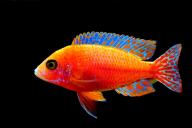Many feline guardians have pondered whether dog food could suffice for their cats - it is occasionally more cost-effective and available in larger quantities.
Cat food and dog food are meticulously designed to cater to the distinct nutritional requirements of each species, considering their unique dietary needs and physiological disparities.
Below are several notable distinctions between cat food and dog food.

Protein Content
Cats necessitate a greater proportion of dietary protein in comparison to dogs.
Protein is vital for cats as it supplies essential amino acids that contribute to diverse physiological functions, encompassing the maintenance of healthy skin, coat, and muscle mass.
Cat food typically contains higher levels of protein to address their distinctive needs, in contrast to dog food.
Taurine
Taurine, an amino acid of utmost significance to cats, is not required in the same magnitude by dogs.
Cats are unable to synthesize an ample amount of taurine internally, thus their diet must include an appropriate taurine supply.
Vitamin A
Cats necessitate retinol in their diet, as they are incapable of effectively converting plant-based sources of vitamin A into its active form.
Palatability
Cats possess a more discerning sense of taste than dogs and generally exhibit more selective eating habits.
Cat food is often meticulously formulated to be highly palatable and appealing to cats' taste preferences, ensuring their consumption of essential nutrients.













